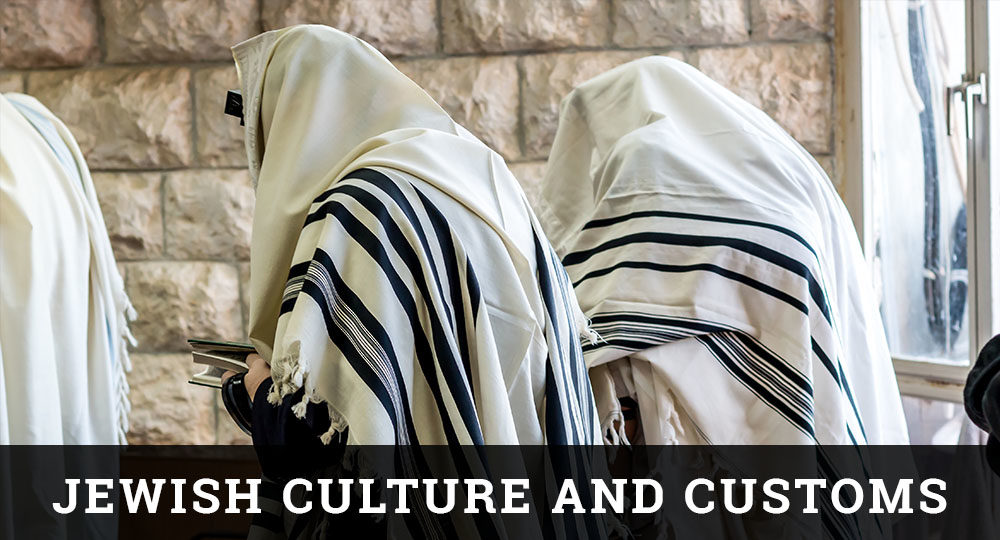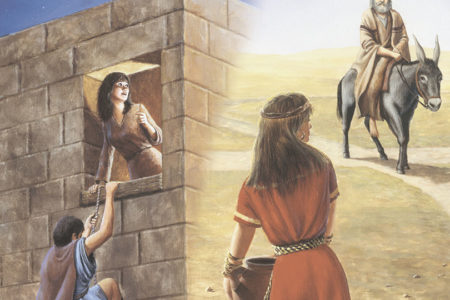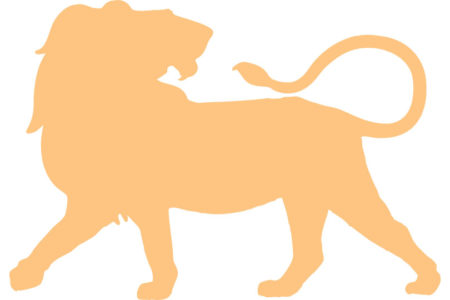From Badge to Banner
Vexillology. Most people have never heard the term; but according to World Book Encyclopedia, it is the study of the history and symbolism of flags. Its root can be traced to the Latin word for “square flag” or “banner”—vexillum.
Today every country in the world has a flag uniquely designed to represent it. Usually, careful thought has been invested in choosing just the right colors and emblems to symbolize the national identity, with the hope that just the sight of the flag will inspire, motivate, and encourage the country’s citizens.
And generally it does. In America, many of us have been known to wipe away a tear or two each time Old Glory soars into ascendancy during the awards ceremonies at the international Olympics.
The citizens of the modern State of Israel are no different and are unsurpassed in demonstrating emotion and pride in their flag. Simply designed, the Israeli flag incorporates a solid white background overlaid with two horizontal blue stripes. Displayed prominently on this field of white is the blue Star of David. Its thoughtful design inspires people to think beyond their own modern state. It is a flag that binds the people of Israel today with the people of Israel in the time of King David himself.
Israel stands as the lone nation in the world whose flag has its roots in the pages of Scripture. In the Hebrew Bible, God communicated His desire for visible rallying points for His people Israel. Two Hebrew words are used to designate that desire: degel and nes. Degel is rendered variously as “flag,” “banner,” or “standard” and was used by Moses in the book of Numbers. Nes, translated “ensign” or “banner,” was used by the prophets Isaiah and Jeremiah.
Numbers 1:52 records that the children of Israel were to “pitch their tents, . . . every man by his own standard.” In addition, they were instructed to encamp “with the banner of their father’s house” (Num. 2:2). Each tribe possessed a God-given emblem that distinguished it from the others. This provided orderly movement for a population that was estimated in the millions.
The prophet Isaiah recorded that in the future, Messiah will “set up an ensign for the nations” (Isa. 11:12). In the book of Jeremiah, the word standard indicates a rallying point: “Blow the trumpet . . . Assemble yourselves, . . . Set up the standard toward Zion” (Jer. 4:5–6).
No trace of those flags or banners exists today. Dispersed into cultures extending to the four corners of the earth, the Jewish people were divided for nearly two thousand years, with no homeland in which to raise a banner of national identity. In the early years of Zionism, Theodor Herzl, founder of the modern State of Israel, began thinking that a flag could help unite his cause. On June 12, 1895, he recorded in his diary that he was contemplating a white flag with seven golden stars: white to symbolize the new life that awaited his countrymen in their land, and seven stars to depict the seven working hours in a day.1
For the next two years, Herzl and other prominent Zionists dialogued concerning the flag’s design; but they could not seem to reach a consensus. According to an article entitled “The Israeli Flag,” cited by The Jewish Student Online Research Center (JSOURCE), David Wolffsohn, a colleague of Herzl’s at the First Zionist Congress in Basil, Switzerland, in 1897, said this of its birth:
“What flag would hang in the Congress Hall? Then an idea struck me. We have a flag—and it is blue and white. The talith (prayer shawl) with which we wrap ourselves when we pray: that is our symbol. Let us take this Talith [or tallit] from its bag and unroll it before the eyes of Israel and the eyes of all the nations. So I ordered a blue and white flag with the Shield of David painted upon it.”2
The blue stripes affixed to Israel’s flag serve as a reminder of the attire Jewish men wear when they pray to the God of Abraham, Isaac, and Jacob. Even before the flag was created, a man named L. A. Frankl wrote a poem in 1860 entitled “Zivei Erez Yehudah,” describing its colors: “All that is sacred will appear in these colors: white—as the radiance of great faith [and] blue—like the appearance of the firmament.”3 Because the exact shade of blue that was to have been used on the tallit is unknown, the flag has no determined shade either. Thus light blue is used, knowing that no one knows what the correct shade should really be.
The Star of David in the center of the flag has long been regarded as a Jewish symbol. It is often referred to as the “Jewish star” by both Jewish people and Gentiles alike. The star is formed by one triangle superimposed upon another—one pointing up, the other pointing down. According to JSOURCE, “by leading a life of Torah and mitzvot [good deeds] the Jew strives to bring together the worlds of the spiritual [point facing up] and the earthly [point facing down], the worlds of the holy and the secular.”4
Other interpretations also abound. One is that the six outer points stand for the six aspects of the Lord’s spirit: namely, wisdom, understanding, counsel, might, knowledge, and fear of the Lord. Another contends that the star represents the three aspects of man: body, soul, and spirit.
There is no reference to the Star of David in the Bible. In fact, the Hebrew Magen David means “Shield of David” rather than “Star of David.” Tradition says that the six-pointed star appeared on David’s battle shield, but there is no hard evidence to substantiate that belief. What is known, however, is that the Nazis used the star as a badge of shame, forcing the Jewish people to wear it on their outer clothing to mark them out for persecution and extermination.
The nation of Israel took that badge of shame and turned it, instead, into a bold and striking symbol of pride for Jewish people everywhere.
Although vexillology may not be a well-known word, or even a well-known discipline, it is, nevertheless, helpful in understanding the nation of Israel. It would be most beneficial, however, to apply the discipline of vexillology to Jehovah-nis’si, (“the LORD is my banner” [Ex. 17:15]). Doing that might yield more than historical information—it might yield a relationship with the true and living God.







